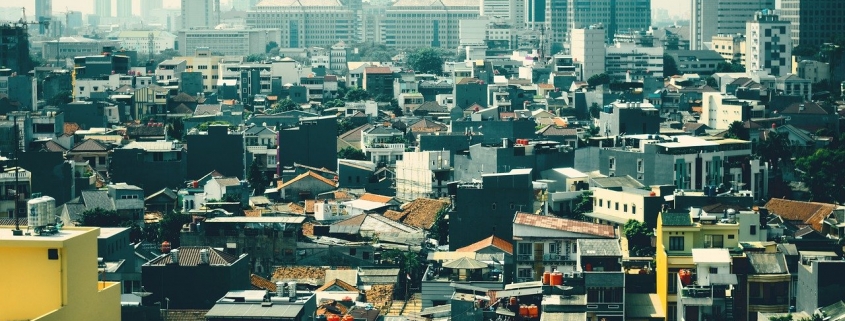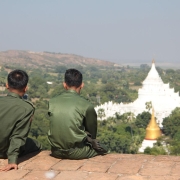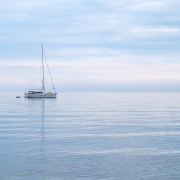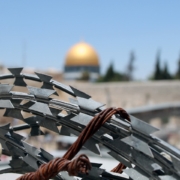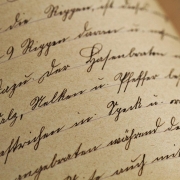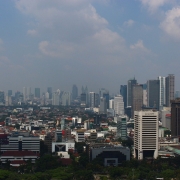What is Guided Democracy?
Topic of Study [For H2 History Students]:
Paper 2: Search for Political Stability
Section B: Essay Writing
Theme I Chapter 1: Approaches to Governance
Historical Context: Struggles of a Liberal Democracy
After independence was achieved in Indonesia, a democratic government was formed. Sukarno became the president, while Mohammed Hatta held the vice president position. The 1950 Constitution was drafted to establish a parliamentary system that supported the conduct of regular elections and diverse political representation.
However, the Indonesian government was hampered by political disunity, as observed by absence of a clear majority after the first general elections in 1955.
Furthermore, two competing entities vied for political roles in the government, namely the military and the Communist Party of Indonesia (Partai Kommunis Indonesia, PKI).
Soekarno stressed two themes in particular that had deep meaning for many to whom he spoke. One was the constant political, economic, social, and psychological strife which, though in fact endemic, liberal democracy was damned as having introduced. The continual tensions between Parliament and Cabinet had always brought down Governments before they could accomplish anything; the idea that a loyal opposition was necessary had led to simple obstructionism.
Excerpt from “The Transition to Guided Democracy: Indonesian Politics, 1957-1959” by Daniel S. Lev.
The Guided Democracy: The rise of authoritarianism
As Sukarno realised that the experimentation with liberal democracy was not viable, he introduced the “Guided Democracy“. In the process, he reverted to the 1945 Constitution, which allowed the president to use authoritarian measures and establish control. In 1959, Sukarno dissolved the parliament and personally appointed half of its members.
Also, Sukarno promoted the ‘Nasakom‘ (Nasionalisme, agama, komunisme) philosophy, which entailed nationalism, religion and communism. By doing so, the Nasakom legtimised the increased political involvement of both the PKI and the military.
In installing Guided Democracy in 1957-1959, Sukarno renewed his stress on the fundamental unity of the various ideological streams within Indonesia, and Nasakom became the grounds for including the Partai Kommunis Indonesia (PKI) in a broad range of government institutions from 1960 and including a few far left members in the cabinent from 1962.
Excerpt from “Historical Dictionary of Indonesia” by Robert Cribb and Audrey Kahin.
Third, Guided Democracy was a major step toward military domination of Indonesian politics. In March 1957, Sukarno responded to a series of regional military rebellions by declaring martial law, effectively ending parliamentary rule and legalizing those rebellions…
…Although martial law formally ended in 1963, Guided Democracy greatly expanded the military’s economic resources and established it as the clear leader of a broad coalition of anticommunist forces.
Excerpt from “Southeast Asia: A Historical Encyclopedia, from Angkor Wat to East Timor” by Keat Gin Ooi.
Indonesian Revolution Re-visited: Konfrontasi
A distinctive feature of the Guided Democracy involved the outright rejection of Western influences in the Southeast Asian region.
In December 1961, Indonesian launched Operation Trikora, which was a military campaign to seize the Dutch-controlled New Guinea. This was also known as the “West Irian dispute”.
Another notable incident involved its neighbouring countries, Malaya, Singapore and the Borneo Territories (Sabah and Sarawak). After the Tunku of Malaya announced the creation of the Federation of Malaysia, Sukarno protested by conducting the Confrontation (Konfrontasi).
Aftermath: The 30 September Movement
Although the Guided Democracy seemed to function more effectively than Sukarno’s pre-1957 efforts, the internal division between the PKI and the military persisted. The economic woes further destabilised the nation.
Eventually, the Guided Democracy came to an end when the PKI was accused of the assassination of army officers, which led to Suharto’s swift military intervention.
What can we learn from this article?
Consider the following question:
– Assess the reasons for the end of Sukarno’s Guided Democracy.
Join our JC History Tuition and learn more about the history of post-independent Indonesia as well as other Southeast Asian nations for the topic of Approaches to Governance.
The H2 and H1 History Tuition feature online discussion and writing practices to enhance your knowledge application skills. Get useful study notes and clarify your doubts on the subject with the tutor. You can also follow our Telegram Channel to get useful updates.
We have other JC tuition classes, such as JC Math Tuition and JC Chemistry Tuition. For Secondary Tuition, we provide Secondary English Tuition, Secondary Math tuition, Secondary Chemistry Tuition, Social Studies Tuition, Geography, History Tuition and Secondary Economics Tuition. For Primary Tuition, we have Primary English, Math and Science Tuition. Call 9658 5789 to find out more.

